
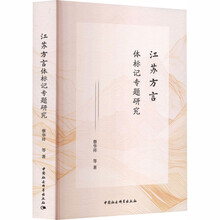
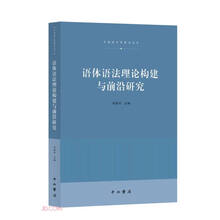
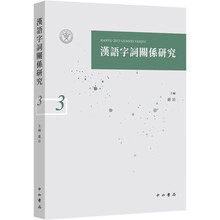
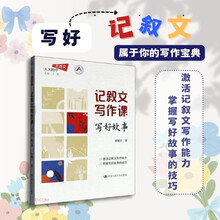
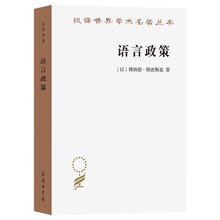
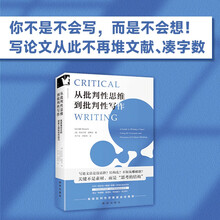
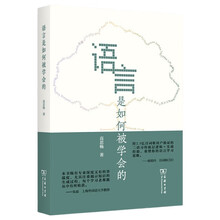
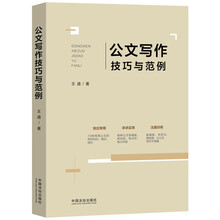
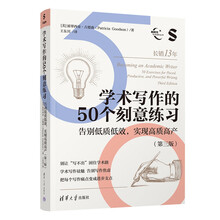
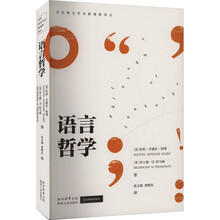
在这本书里,作者介绍了作者个人认为十分有趣的且具有代表性的中国文化元素与读者们共享,以期调动读者学习汉语言的兴趣。
这本书就好似一个大房子,里面有很多房间。每个话题都可以看作一个房间,而每个章节的内容则可以被看作探索不同房间的钥匙。读者们可以拿着自己喜欢的钥匙独立地或者结伴而行地来探索某个房间甚至是整个屋子。
第一章 中国食文化
知识构建
在马斯洛的需求层次论中,食物被安置在金字塔的底端。食物,是人类赖以生存的基础。食文化,在中国有着历久弥新的意义。
中国的食文化可谓当今世界之最!它历史悠久、品种繁多。无论在选材、制作工艺还是饮食风俗上,根据地域的不同皆有差异。经过千年的演变,发展成广为人知的四个大的菜系:鲁菜、川菜、粤菜和苏菜。鲁是山东的简称,所以鲁菜即山东菜。鲁菜品种多样,味道偏于鲜咸。代表菜有葱烧海参、红烧大虾等。川是四川的简称,川菜讲究的是麻辣。代表菜有麻婆豆腐、夫妻肺片等。看到这里,不知你心中是否有这样的疑问:豆腐和麻婆有什么关系?夫妻肺片应该不是字面上看到的如此恐怖的意思吧? 在介绍苏菜和粤菜之前,我先来讲讲这两道菜背后的故事。相传麻婆豆腐是由清代成都一位面部有麻子的女人所创,味道堪称一绝。不仅麻辣鲜咸兼具,而且豆腐入口软嫩细滑。麻婆豆腐由此得名。而夫妻肺片则是根据20世纪30 年代成都一对专卖凉拌牛杂的夫妇所命名的。牛杂因包含牛心、牛舌、牛肚等,所以早先被称为“废片”。后来因为“废”字不好听,选了同音字“肺”来替代。
苏菜,也被称为淮扬菜。和鲁菜、川菜味道的大开大合不同,苏菜讲究精致,味道也偏温和。代表菜有清炖狮子头、松鼠鳜鱼等。有了前面的故事铺垫,你们脑海中是不是应该有了对菜名的理解?清炖狮子头应该和狮子没关系,松鼠鳜鱼也没有松鼠什么事。没错,这两道菜是根据其形状而命名。狮子头实际是肥瘦相间的肉丸子。肉丸经煮熟后,肥肉瘦肉分离,显得玲珑有致。因形状酷似雄狮头,故在唐代时期被某官员赋予狮子头的美名。清炖狮子头秉承淮扬菜的特点:味道鲜香,肥而不腻。松鼠鳜鱼的名字来头更大。相传乾隆皇帝到苏州,当地厨师为讨其欢心而别出心裁,把鱼烧成扬尾的松鼠形状。
乾隆帝吃罢大加赞赏,松鼠鳜鱼由此得名。
粤菜即广东菜。粤菜偏清淡,追求食物本身的味道呈现。粤菜的代表菜为白切鸡、白灼虾等。我个人对粤菜比较感兴趣的部分是它丰富多样的早茶小吃。和大家分享一下我吃过的广式早茶中中意的美食吧。
香港及内地南方部分地区讲的是广东话/粤语。它和普通话很大的区别在于有九声六调,并且拼音表也不相同。粤语拼音,简称粤拼,是香港语言学学会在1993 年制定的罗马化拼音方案,这对于想要系统学习广东话的外国学习者是一个福音。值得一提的是,自香港1997 年回归祖国,普通话也在该地区普及了起来。再加上香港融合的多语环境,就算不会说粤语,也一样可以在香港生活、工作和学习。在这里附上一个我个人认为非常不错的油管频道:Learn Cantonese with CantoneseClass101。如果对学习粤语有兴趣的朋友,可以自行研究。
应用实践
“想要知道梨子的滋味,就要亲口尝一尝。”想要掌握一门语言,就要亲自用一用。 在自己生活的城市或地区找一家广式餐厅,约上朋友家人一起去吃早茶,尝试用学到的词点餐吧。(即使餐牌看不懂也没关系。)
现如今网络资源丰富,许多以前难求的菜谱,现在动动手指都能在网络上找到。我有一位新西兰朋友酷爱中国美食,根据网上找到的菜谱,已经成功地在家里烹饪出许多他喜欢的菜肴。如果正在读此书的你也是一名“ 吃货”,不妨上网找找感兴趣的菜谱,自己动手试试看吧。(友情提示:调料在华人超市都有售哦!)
思考感想
想一想,你对中国的什么地区感兴趣?可以自己上网查查那里的美食。比如“川菜”。想要知道读法,可以把吸引你的美食的英文名称键入搜索引擎。比如“Dan Dan Noodles”。除相关的介绍之外,绝大多数情况下你会很幸运地看到相关的汉字:“担担面”。然后将汉字复制粘贴到搜索引擎。搜索时别忘记加上“Pinyin” 2。这样,你就可以找到它的读音“dàn dàn miàn”了。你是不是惊喜地发现中文的拼音“dàn dàn miàn”和你之前看到的英文翻译“Dan Dan Noodles” 好像差不多。没错,不少饮食上的翻译还是保证了原语言的原汁原味。这样一来,说不定你在不知不觉中已经掌握很多中文的单词和发音了。
再想想,你在附近的中餐外卖店有没有点过“chow mein”?这其实是为了外国人发音方便,按照英文发音规则演变而来的。正宗的中文发音是“chǎo miàn”。善于总结的你会发现“miàn”就是“noodles”。所以尝试举一反三,想想你还喜欢吃什么“miàn”吧。哦,对了,如果在中餐店遇到年纪相对比较大的华人,说“chǎo miàn”他/ 她有可能听不懂哦。这个时候用粤拼 “caau2 min6”试试看吧,说不定有意外的惊喜哦!
Chapter 1: Chinese Food Culture/
中国食文化
(pronounced: zhōngguó shí wénhuà)Construction
In Maslow’s hierarchy of needs, physiological needs(which are basic or survival needs), including air, water,and food, are placed at the bottom of the pyramid. Foodis a fundamental requirement for human beings to live.However, food culture in China has further significance. Across the world, China’s food culture i s extraordinary and reputed for its long history and a wide variety of cuisines. There is tremendous diversity among different regions of China in terms of ingredient selection, cooking techniques, and local dietary habits. From thousands of years of evolution, four great traditions of Chinese cuisine have been developed. These great traditions are Lu cuisine, Chuan cuisine, Yue cuisine, and Su cuisine.
Lu is another name for Shandong province. Lu cuisine/ 鲁菜 (pronounced: lǔ cài) contains a wide range of varieties of dishes, and these dishes primarily taste fresh and salty. Representative dishes include braised sea cucumber with scallion/ 葱烧海参 (pronounced: cōng shāo hǎi shēn) and braised prawns/ 红烧大虾 (pronounced: hóng shāo dà xiā). Chuan is another name for Sichuan province. Chuan cuisine/ 川菜 (pronounced: chuān cài) features numbing-hotness and spiciness. Mapo tofu/ 麻婆豆腐 (pronounced: má pó dòu fu) and beef lungs in chilli sauce/ 夫妻肺片 (pronounced: fū qī fèi piàn) are examples of dishes from Sichuan province.
When seeking the English translation of these dish names, I found that some translations did not always fully address the dishes’ cultural and historical contexts. Translations sometimes neglect to include the inspiring and compelling stories behind the original Chinese names. For example, mapo/ 麻婆 in the Chinese language means a pockmarked woman. The story originates from the Qing Dynasty. In Chengdu, a city in Sichuan province, a lady with pockmarks on her face created a special tofu dish. The dish was unique in that it was numbingly hot and spicy, but also soft, tender, and melted in the mouth. Therefore, the dish was named after Mapo, the creator of
the yummy dish.
The original name of a dish mentioned earlier, beef lungs in chilli sauce, may sound a bit gruesome if
translated literally. The literal translation of this dish is couple (husband and wife) lungs. As a matter of fact, the dish was named after a couple who sold cold mixed beef offal in Chengdu in the 1930s. Beef offal, including beef lungs, hearts, tongues, and tripe was previously called waste pieces/ 废片 (pronounced: fèi piàn). However, people did not like the name because the word “waste/ 废 (pronounced: fèi)”did not sound appropriate for food. Therefore, they considered a homonym “肺/ lung (pronounced: fèi)”to replace the word “aste/ 废 (pronounced: fèi)” Now that you know the story behind this dish, you may be surprised to know that beef lungs in chilli sauce contain not only beef lungs, but hearts, tongues, and tripe. This is an example of an English translation failing to reveal a Chinese dish’ real and true substance.
Su cuisine/ 苏菜 (pronounced: sū cài) is sometimes referred to as Huaiyang cuisine/ 淮扬菜 (pronounced: huái yáng cài). Unlike Lu and Chuan dishes, Su dishes are exquisitely presented and taste light and mild. Stewed pork ball/ 清炖狮子头 (pronounced: qīng dùn shī zi tóu) and deep-fried mandarin fish1/ 松鼠鳜鱼 (pronounced: sōng shǔ guì yú) are two examples of delicacies from Su. However, the English translations of these dish names lack essence because they omit an interesting component -the appearance of the dishes. The original Chinese names of stewed “lion-head-shaped” pork ball and deepfried “squirrel-shaped” mandarin fish, focus on the dishes’ appealing presentations.
An official of the Tang Dynasty coined the imaginative name stewed lion-head-shaped pork ball
after prudently observing the dish’s appearance. Once the meatball was well cooked, the mixture of fat and lean would be separated, bearing a great resemblance to a lion’s head. Stewed pork ball embodies the characteristics of Huaiyang cuisine as it tastes fresh and is not greasy. The origin of the name for deep-fried squirrel-shaped mandarin fish is even more interesting. It is said that during the Qing Dynasty, the Qianlong Emperor visited Suzhou, a city in Jiangsu province. To please the emperor, the local chef ingeniously fried the fish into the shape of a squirrel with a raised tail. The Qianlong Emperor was highly impressed with the dish, and this vivid depiction of the dish became esteemed and worshipped.
Yue cuisine/ 粤菜 (pronounced: yuè cài) refers to Guangdong or Cantonese cuisine, which is always light and preserves the authentic taste of the ingredients. Examples of representative dishes are plain boiled chicken/ 白切鸡 (pronounced: bái qiē jī) and scalded prawns/ 白灼虾 (pronounced: bái zhuó xiā). I am personally fond of Cantonese traditional brunch, which is also known as yum cha/ 饮茶 (pronounced: yǐn chá). Yum cha includes rich and diverse dim sum/ 点心 (pronounced: diǎn xīn) and Chinese tea. Here I would like to share a couple of pictures of what I had for dim sum meals1 at
some Cantonese restaurants.
Noticeably, Cantonese/ 粤语 (pronounced: yuè yǔ) is spoken in Hong Kong and some regions of southern mainland China. Unlike Mandarin, Cantonese has six tones, and the Pinyin table is also different. Cantonese Pinyin, also called Jyutping/ 粤拼 (pronounced: yuè pīn), was formulated by the Linguistic Society of Hong Kong in 1993. This romanised Pinyin scheme serves well for foreign learners who decide to learn Cantonese systematically. Since Hong Kong’s return to China in 1997, it is worth noting that Mandarin has also been widely spoken in that region. The multilingual environment guarantees that those who cannot speak Cantonese can live, work and study in Hong Kong.
I would like to recommend a YouTube channel that I personally find very useful: Learn Cantonese with CantoneseClass101. If you are ever interested in learning Cantonese, you can explore it yourself.
致谢 · 001
Acknowledgements · 003
准备读之前 · 006
Preparation Before Reading · 008
第一章 中国食文化 · 011
Chapter 1: Chinese Food Culture · 020
第二章 中国茶文化 · 031
Chapter 2: Chinese Tea Culture · 039
第三章 中国陶瓷 · 047
Chapter 3: Chinese Ceramics · 055
第四章 中国诗词 · 063
Chapter 4: Chinese Poetry · 070
第五章 中国书法 · 079
Chapter 5: Chinese Calligraphy · 089
第六章 中国京剧 · 095
Chapter 6: Peking Opera · 103
第七章 中国相声 · 111
Chapter 7: Chinese Crosstalk · 118
第八章 中国园林 · 127
Chapter 8: Chinese Gardens · 133
附录——成语总结 · 141
Bonus — Idioms Summary · 141
参考文献 · 145
Bibliography · 145